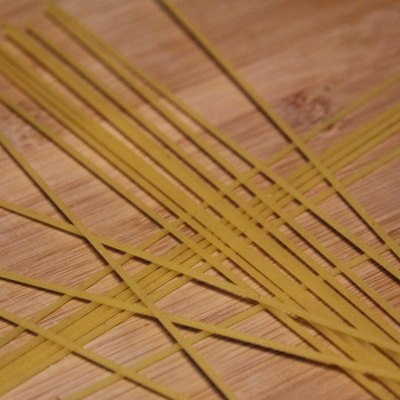
In our last post, we talked about why carbohydrates are still important to athletic performance. We also mentioned that even though you still need carbs (and starchy ones at that), the typical North American diet contains too many of the processed variety.
One of the common reactions you’re seeing to carb-overload is the popularity of going gluten-free. There are a number of benefits to this choice, but it’s also a bit of fad right now. So, let’s dig in and find out what gluten is, why many people have intolerance around it, and what you can do if you think you have a gluten sensitivity.
First, what IS gluten?
Gluten is a sticky protein found in grains like wheat, barley and rye. It adds elasticity to dough, helping breads and pastas to retain their shape and giving them the chewy texture we’re used to. It can also be found in spelt, bulgur, kamut, semolina, triticale, farro, and pumpernickel (so, many of your wheat substitutes), as well as in MSG, lecithin, and many thickeners. Some experts also say to steer clear of oats, though the data is mixed.
Is gluten dangerous?
If you have celiac disease, absolutely.
If you don’t, again, the data is more open to interpretation. Gluten intolerance is one of the most common food sensitivities out there – and its numbers are growing.
What does it do?
In those with an intolerance, when the gluten passes through the digestive tract and meets immune cells, they treat it like an invader and mount an attack on the gluten protein. In celiacs, the body doesn’t stop at attacking the gluten – it also attacks cells in the intestinal wall. Damage to the lining of the small intestine can prevent important nutrients from being absorbed.
How do I know if I’m intolerant?
The only way to know if you have celiac disease is to get tested. Symptoms of celiac disease are diarrhea, bone pain, and anemia – though it can sometimes have few or no symptoms. Symptoms of gluten sensitivity are even broader, including: heartburn, gas, weight loss or gain, fatty stool, headaches, abdominal pain, chronic fatigue, constipation, or even cravings for baked goods and sweets (though don’t go blaming your sweet tooth on gluten intolerance without getting tested first). Also, there have been some studies suggesting that Irritable Bowel Syndrome can be caused or exacerbated by gluten – again, take this with a grain of salt as science often argues both sides.
Are there any risks to going gluten-free?
If you’re celiac, no way. In fact, you don’t have much of a choice. If you’re curious about whether or not you have a sensitivity, trying a short-term elimination diet (under the guidance of a registered dietician or nutritionist) won’t be likely to do you any harm – though you might get pretty cranky for the duration of the diet. While there are no health benefits to gluten, per se, some gluten containing foods do offer necessary vitamins and minerals to the diet, so if you choose to eliminate gluten make sure that those nutrients are coming from another source.
So what can and can’t you eat when going gluten-free?
There are multitudinous gluten-free options out there. in fact, more and more gluten-tolerant people are buying gluten-free products.
“The market for gluten-free products is exploding. Why exactly we don’t know. Many people may just perceive that a gluten-free diet is healthier.” – Peter H.R. Green, MD, director of the Celiac Disease Center at Columbia University, for WebMD.
However, lots of gluten-free products coast on the idea that “gluten-free is healthy”, when really the products lack nutritional value, or are highly processed. Instead of seeking out premade gluten-free products, here’s a list of approved grains from Precision Nutrition:
- Amaranth
- Arrowroot
- Buckwheat
- Corn and cornmeal
- Flax
- Gluten-free flours (rice, soy, corn, potato, bean)
- Hominy (corn)
- Millet
- Quinoa
- Rice
- Sorghum
- Soy
- Tapioca
- Teff
Keep in mind, you can also get carbs from vegetable, fruit and legume sources as well.
And what’s off the table in a gluten-free diet? (list also from Precision Nutrition, and certainly not exhaustive):
- Beer
- Breads
- Cakes and pies
- Candies
- Cereals
- Cookies and crackers
- Croutons
- French fries
- Gravies
- Imitation meat or seafood
- Matzo
- Pastas
- Processed luncheon meats
- Salad dressings
- Sauces, including soy sauce
- Seasoned rice mixes
- Seasoned snack foods, such as potato and tortilla chips
- Self-basting poultry
- Soups and soup bases
- Vegetables in sauce
Long story short – if you think you have a gluten sensitivity of any degree or present with some of the symptoms- seek out a professional who can guide you through the process of eliminating gluten. If you’re just curious about eating less gluten – look into some of the grains listed above, experiment with them in your regular meals. And, if you just want to keep it simple, replace a grain with a green once in a while – a whole post coming about those switches soon!

 The Top Ten Exercises for Roller Derby Athletes
The Top Ten Exercises for Roller Derby Athletes  Fresh Meat – You Got This!
Fresh Meat – You Got This!  Go From Benchwarmer to MVP with the 1% Secret
Go From Benchwarmer to MVP with the 1% Secret  PreHab: How to Reduce Concussions
PreHab: How to Reduce Concussions  Pre-Hab: How to Engage Your Core
Pre-Hab: How to Engage Your Core